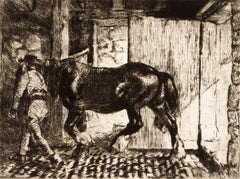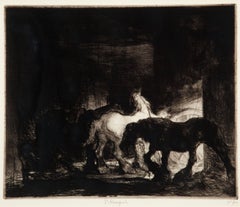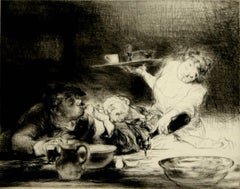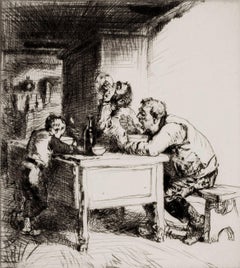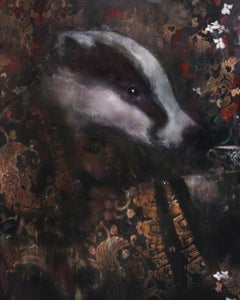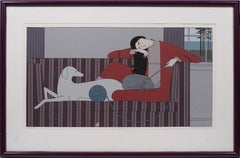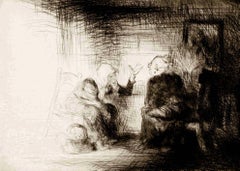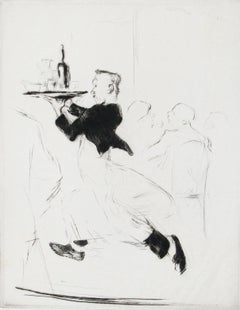Edmund Blampied Interior Prints
Edmund Blampied was a painter, etcher, lithographer and sculptor. Born in 1886 to a family of three boys in St. Martin, Jersey, Blampied became interested in drawing at an early age. After visiting the studio of John Helier Lander in 1899, Blampied decided to make a career as an artist. In 1903, he went to London to attend Lambeth Art School where he studied etching under Walter Seymour. In 1905, he joined the Daily Chronicle as an artist. In that year, he was awarded a scholarship to Bolt Court School of Photo-engraving and Lithography. In 1912, Blampied left the Chronicle and established his studio. He earned a living by illustrating novels and short stories. In 1913, he had his first exhibition at the Leicester Gallery in London. The following year he married Marianne Van Abbé. During the 1920s, he became a member of the Royal Society of Painter-Etchers and Engravers. During the 1920s, Blampied became a member of the Royal Society of Painters-Etchers and Engravers and exhibited in London to critical acclaim. He produced a folio of comic drawings in the 1930s which was published in New York in 1934 and another that was published in London in 1936. The Keeper of Prints and Drawings at the British Museum published a monograph on his work. His London exhibitions were highly successful. In 1938, he moved to Bulwarks, St.Aubin in Jersey, but at the onset of the Occupation, had to relocate to Route Orange, St. Brelade. He remained there throughout World War II during the German Occupation, even though his wife was Jewish. During the Occupation, he designed banknotes and a set of postage stamps for the States of Jersey. After the War and the end of the Occupation, he continued to live and work in Jersey. In 1966, he died at the age of 80. He was a member of the Royal Society of British Artists, 1938; Royal Society of Painter-Etchers and Engravers, 1921.
Early 20th Century Modern Edmund Blampied Interior Prints
Drypoint, Etching
1920s Modern Edmund Blampied Interior Prints
Drypoint, Etching
Early 20th Century Modern Edmund Blampied Interior Prints
Drypoint, Etching
1930s Modern Edmund Blampied Interior Prints
Drypoint
Early 20th Century Modern Edmund Blampied Interior Prints
Drypoint, Etching
1920s Modern Edmund Blampied Interior Prints
Drypoint, Etching
21st Century and Contemporary Edmund Blampied Interior Prints
Screen
1980s Modern Edmund Blampied Interior Prints
Screen
Early 20th Century Romantic Edmund Blampied Interior Prints
Paper, Ink, Drypoint
1960s Modern Edmund Blampied Interior Prints
Etching, Aquatint
Early 19th Century Old Masters Edmund Blampied Interior Prints
Engraving
1920s Art Deco Edmund Blampied Interior Prints
Engraving, Aquatint
1930s American Modern Edmund Blampied Interior Prints
Etching
Early 20th Century American Modern Edmund Blampied Interior Prints
Drypoint
2010s Contemporary Edmund Blampied Interior Prints
Screen
Mid-18th Century Old Masters Edmund Blampied Interior Prints
Engraving, Etching
Early 20th Century Modern Edmund Blampied Interior Prints
Engraving
1970s Folk Art Edmund Blampied Interior Prints
Screen
1930s Modern Edmund Blampied Interior Prints
Drypoint, Etching
1930s Modern Edmund Blampied Interior Prints
Drypoint, Etching
1920s Modern Edmund Blampied Interior Prints
Drypoint, Etching
